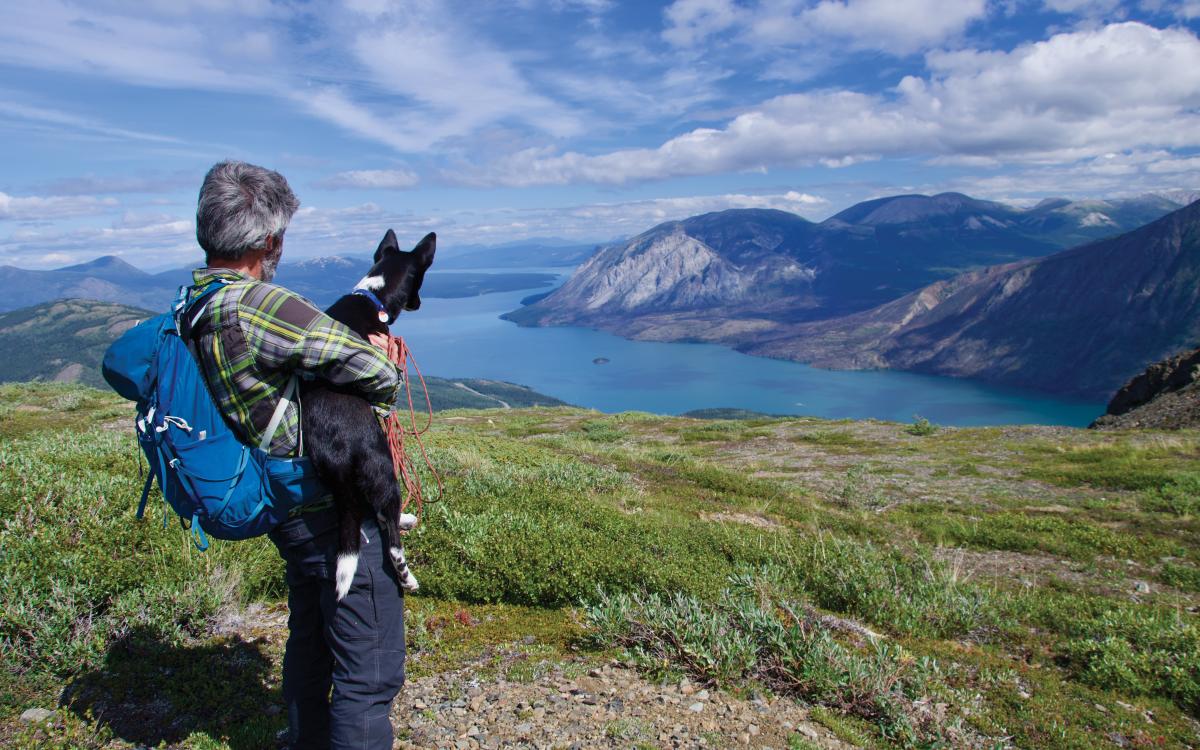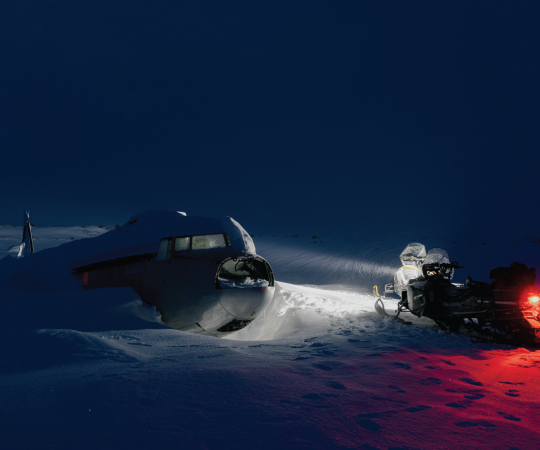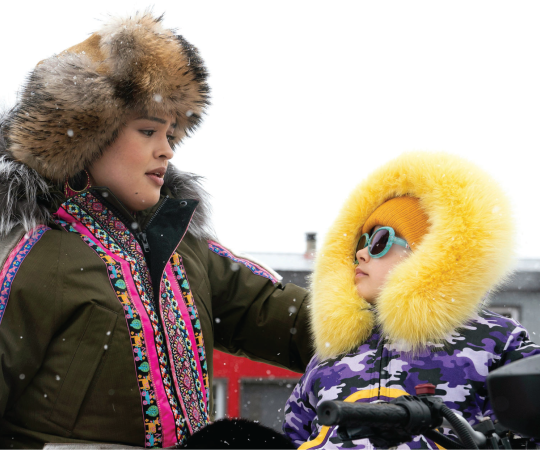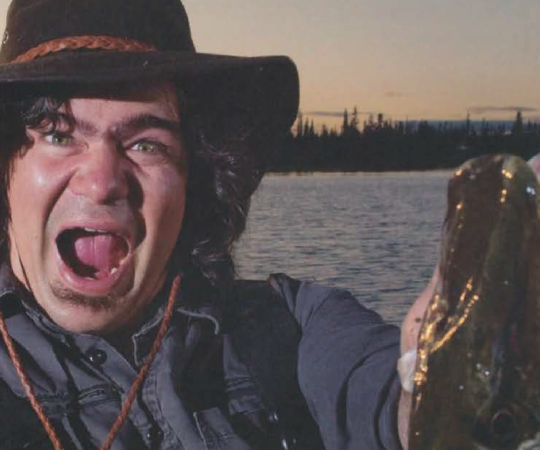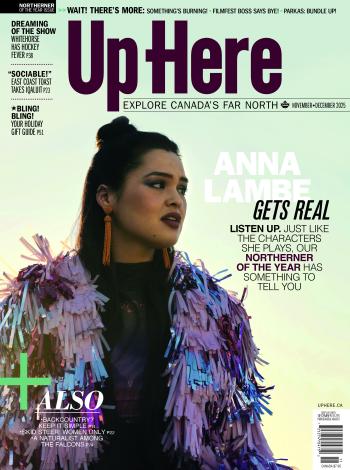Our arrival along the lakeshore sets off a series of tail slaps—the adult beavers first, its three kits following with much less skill. My husky-heeler puppy stiffens at the noise. Her ears perk. Her nose twitches. But before I say a thing, Juniper remembers to sit.
I join her in the soapberry bushes, observing the beavers who resume hauling branches to their lodge. I am relieved Juniper is able to quell her excitement and sit quietly with me. I dare say Juniper is as amused by this moment as I am, although her attention span is brief. After a few minutes, she grows bored and is ready to resume our hike.I live in a quaint little cabin in the Yukon woods, on the outskirts of Whitehorse. Mule deer, moose, lynx and coyote frequent our yard. The day I brought Juniper home, I knew I wanted to minimize the disruption she would bring to the neighbourhood. I knew I also wanted a dog I could bring along on all my outdoor excursions.
Dogs infuse their infectious joy into our lives, which is why we want to include them in our adventures. But as backcountry travel and dog ownership both grow in popularity, how do we bring our furry friends along responsibly? Social media is replete with dogs posing on mountaintops, sleeping in wildflower meadows, bobbing adorably in canoes, but we read little of the tedious training that goes into raising an adventure dog. It takes patience to raise a pup to be comfortable in the backcountry, to respect wildlife, to subdue their chase instinct. Especially if you happen to adopt a high-strung dog like Juniper.
To hike with us, we have to build up a pup’s endurance slowly, allowing extra time for naps along the way. We need to teach them how to share the cramped confines of a tent and how to come and go through the zipper, and not by clawing through the mesh screen.
For the first summer, I carried Juniper’s dog bed—a small comfort from home—or her homemade sleeping bag when backpacking. It made the transition from lounging on the couch beside the woodstove to sleeping outside a little gentler.
I concentrated on teaching Juniper the skills I thought necessary to becoming an adventure dog. This included superb leash manners, excellent off-leash recall, and to heel while on and off leash. I endeavored to reduce her penchant for barking at everything and everyone. Most importantly to me, I wanted to teach her to leave wildlife alone, and not view it as fun to chase.
I neglected friends and passed up social events to focus on Juniper’s training, pouring all my energy into raising a well-behaved adventure pup. In her first year and a half of life, Juniper has consumed countless slices of cheese and bags of dried salmon and sardines, as rewards for good behaviour. But it hasn’t always been easy. In that time, I have despaired frequently, imbibing gin to soothe the many frustrations arising from the challenge of teaching such an impish, willful puppy.
I am fortunate so much wildlife resides near my home. I can use squirrels, moose, grizzlies and grouse we see for long-leash training. The highly enticing, yet ubiquitous red squirrel and Canada goose, often the object of many a dog chase, are excellent subjects for Juniper’s temptation-resistance training. Squirrels are always off-limits. I’m not concerned that she might catch one; instead, it’s about consistency. It would be confusing if I let her chase squirrels but said no to ducks, Dall sheep or my neighbour’s horses.
It took a year of practice before Juniper could sit still while a herd of mule deer sprinted across the hillside in front of us. Or before she could resist the urge to pounce into a thicket in pursuit of a hare. Still, Juniper is not to be trusted off-leash all the time. She’s easily excited and I must remain aware of her swiftly shifting moods.
Juniper can also get overwhelmed after a few wildlife encounters, so she goes back on the leash until she calms down. I have accepted the fact that her high-energy breed mix means she may never fully be trustworthy off-leash, but I hope good leash manners will make up for her intensity.
You might ask whether it’s worth the long, aggravating months spent training a dog to sit while in the presence of a wild animal. What’s the harm in letting a dog chase a few marmots at a backcountry campsite while we cook our dinner? Why deny our dogs the joy of the chase, especially when their chances of catching anything is slim?
Sure, off-leash dogs have more fun than dogs on leashes, but the backcountry should not be treated as a doggie playground. Wilderness areas are for the wild. As much as we might want our dogs to run as wild and free as wolves, they are, like us, only visitors.
Last summer, I read story after story that showed the potentially tragic consequences of unruly dogs in the wild: a dog chasing a moose calf, possibly causing it to become abandoned from its mother; dogs injuring mule deer; dogs chasing a grizzly, who, in turn, chased the next group of hikers coming along the trail.
Survival is tenuous in the wilderness. Animals that hibernate—bears, Arctic ground squirrels, marmot—have just a few short summer months to mate, raise young and get fat before winter. They cannot afford to deplete their precious reserves fleeing from dogs, just because we find it funny or because it’s an easy way for a pup to burn off excess energy. If left to run free, dogs will eventually push wildlife away and that patch of wilderness we claim to cherish will become a little less wild.
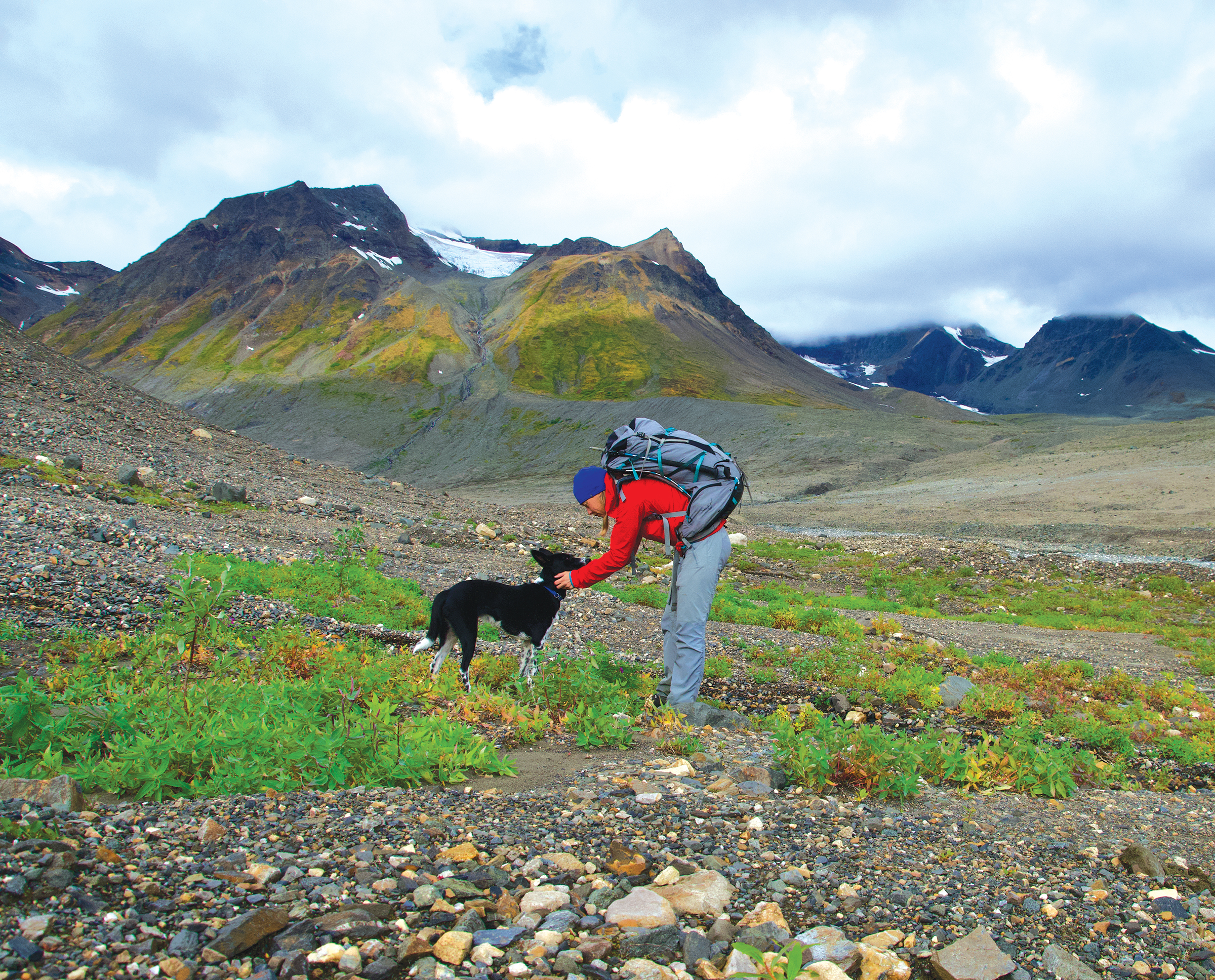
Thechàl Dhâl Mountain in Kluane National Park and Reserve is a popular trail, offering sweeping views of the Icefield Ranges and the rare opportunity to hike among the Dall sheep that reside on the mountain year-round. Parks Canada and the Kluane National Park Management Board, however, have concerns for the mountain’s Dall sheep population and recently requested visitors not bring their dogs along on this hike.
I had hoped to climb the mountain this spring with Juniper, but I agree with the ban, having run into a few ill-behaved off-leash dogs and blasé owners here. Unless we begin to acknowledge the negative impact dogs have on wildlife populations and take steps to remedy the situation, we can expect to see more restrictions. The U.S. National Parks Service already bans dogs from all backcountry areas.
New Zealand and Australia have similar laws. We should be grateful our dogs can still come adventuring with us into the backcountry of Canada’s national parks (with a few exceptions), and provincial and territorial parks.
I want Juniper along on my outdoor adventures. Her curiosity and happiness brightens the coldest, rainy day and her hypervigilance will ensure no wolf or black bear ever again sneaks up behind me while I nap.
But I also delight in seeing wildlife—the weasel peering out from the boulders, a red squirrel harvesting and drying mushrooms. Or hiking alpine meadows alongside a nonchalant grizzly. A rowdy dog would ruin these wild encounters. The purpose of all my suffer-fests is to go out and see what I might see. I have no desire to endure the drudgery of backpacking only to let my dog chase away the wildlife I’ve come to find.
This is what motivates me to dedicate every spare moment I have to training Juniper to walk nicely on a leash, to stick close when off-leash, to return to my side with one sharp whistle, and to sit—instead of chase—wildlife. Despite all the frustration and setbacks, I am seeing the results of her training as each of our hikes becomes easier. And teaching Juniper to sit when she sees wildlife has had unexpected results.
Juniper alerts me to far more wildlife than I would ever find on my own, or if she were allowed to run amok. Whenever Juniper abruptly sits and stares off into the distance, I know to follow her gaze—or her nose. Likely, she’s just sniffing out a red squirrel or a ptarmigan. But she has already tipped me off to a wolf hiding in the willows, a lynx watching us from a riverbank, and a grizzly ambling down a creek bed.
As Juniper grows up and her behaviour improves, I no longer deem the added weight of her kibble a burden. I’m happy to lug around her food in exchange for the wildlife she points out to me. She is becoming a companion, part of the team.

